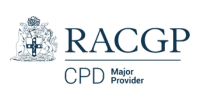Excision is routine work in primary care, but deciding who should wield the scalpel isn’t always...
.jpg?height=200&name=HCE%20HubSpot%20blog%20images%20600x350%20(22).jpg)
Acquire the knowledge to manage menopause-related symptoms seen in older female patients in primary care.
/MCMWH.webp?width=500&height=400&name=MCMWH.webp)
Delivered by a leading expert, this course explores the diagnosis and management of perimenopause and menopause in primary care setting.
- This course is perfect for practitioners with no to little training in this area.
- Provide support to female patients with menopausal concerns - health risks and issues extending beyond the menopause.
- This course is for physicians, nurse practitioners, and degree-qualified nurses.
- CPD-accredited.
100% online
$495
Special rates available
30.5 hrs
Self-paced
Professional Diploma program in Women's Health >
Professional Diploma program in Sexual & Reproductive Health >
- Learn the best practice guidelines for prescribing menopausal hormone therapy.
- Acquire knowledge to manage premature ovarian insufficiency, urogenital issues, osteoporosis, cardiovascular risk, cognitive decline, depression, and persistent vasomotor symptoms.
- Gain an insight into women’s health by exploring one of the most prevalent topics in the field.
- Receive Recognition of Prior Learning and cost savings towards the HealthCert Professional Diploma pathways in Women’s Health and/or Sexual and Reproductive Health.
Get unlimited access to all course content, additional learning materials, ongoing post-course support, and more.
This module on menopause provides comprehensive information about the definitions, features and underlying causes of menopause and discusses the typical process and duration for each of the four stages: perimenopausal, menopausal, early postmenopausal and late postmenopausal. Methods for assessment and differential diagnosis of menopausal symptoms are outlined including indications for further investigation. Management options including lifestyle modifications, “natural” or complementary therapies, non-hormone pharmaceutical options and menopause hormone therapy (MHT) are discussed. Different types of MHT are reviewed including potential benefits and risks, safety considerations and testing methods. It also acknowledges potential contraindications for MHT and statistics that suggest a lack of observable effectiveness in treating some health conditions. The module outlines effective courses of action for adjusting treatment and managing complications.
As estrogen deficiency begins to dominate in post menopause, women may experience health issues and escalated risks. This module examines the aetiology, compounding factors and socioeconomic burden. Content includes the medical and complementary management of osteoporosis, genito-urinary syndrome, mood disorders and cardiovascular disease. It provides an outline of the risk factors associated with osteoporosis and fragility fractures. It discusses the tools to assess fracture risk as well as the criteria for, and interpretation of DXA scans. Lifestyle interventions and pharmacotherapy are also considered. Together with general care, non-hormonal measures and the role of topical or systemic estrogen therapy are considered. Genito-urinary syndrome caused by the hypogenic state of post menopause is discussed. The importance of a mental health assessment for post-menopausal women is emphasised including risk factors and management of depression and anxiety. The module concludes with an overview of cardiovascular disease, the risk factors (including the impact of estrogen deficiency), and the evidence and parameters for hormone therapy.
This module focuses on premature ovarian insufficiency (POI). The module commences with definitions of early and premature menopause including risk factors and causes of spontaneous POI. Iatrogenic POI caused by chemotherapy, radiotherapy or surgery. Information about clinical presentations of POI, diagnosis criteria, patient history, examinations, investigations, and ongoing monitoring are listed in unit two. Health consequences may include psychological distress, osteoporosis, cardiovascular disease, cognitive impairment, sexual dysfunction and other health concerns. The management of POI from initiating care and coordinating care may include a multidisciplinary approach. Information is provided on managing symptoms of menopause, sexual health difficulties and psychological issues. When managing patients with this condition, consideration needs to be given regarding prevention of bone loss, osteoporosis and prevention of cardiovascular disease.

General practitioner and GP supervisor
Associate Professor Debbie Kors is the founder and joint owner of a private teaching general practice in Port Macquarie, Australia. She works there as a general practitioner and GP supervisor of GP registrars and medical students.
A/Prof Kors is a passionate advocate for the profession of general practice. She is a Conjoint Associate Professor in Primary Health Care at the UNSW Rural Clinical School, Port Macquarie campus and has previously worked as a senior medical educator with North Coast GP Training. In 2010, she was nominated for and won the General Practice Education and Training GP Supervisor of the Year award.
A/Prof Kors holds a MBBS (first class honours), Fellowship of the RACGP, Masters of Family Medicine (clinical), Diploma of the Royal Australian College of Obstetricians and Gynaecologists, Graduate Diploma of Medical Education and a Certificate of Family Planning.
Bundle two courses and save 5%, or three courses and save 10% upon enrolment.
Talk to us about deferred payment options, registrar scholarships and special rates.
*For Australian residents only: Online course prices are shown exclusive of GST. If you are GST-registered, please enter a valid ABN at checkout to ensure GST is not applied. Otherwise, 10% GST will be added at checkout. View our FAQ for more information.
/MCMWH-1.webp?width=680&height=500&name=MCMWH-1.webp)
| RACGP Activity Number | ACRRM Activity Number | Activity Title | Education Hours | Performance Hours | Outcome Hours | ||
|---|---|---|---|---|---|---|---|
| 469416 | 31196 | Post menopause health issues | 469416 | 31196 | 4.5 | 6 | 0 |
| 473822 | 31204 | Premature Ovarian Insufficiency | 473822 | 31204 | 4 | 6 | 0 |
| 455726 | 31184 | Menopause | 455726 | 31184 | 4 | 6 | 0 |
| Total hours | 12.5 | 18 | 0 | ||||
View the CPD Hours for all HealthCert Education activities.
HealthCert Education provides a variety of Outcome Measurement activities to suit your needs. Please contact an Education Advisor for more information.
This course is for medical practitioners who wish to support their female patients with menopausal concerns in primary care.
This course is for physicians, nurse practitioners, and degree-qualified nurses. The course assumes no prior knowledge or training in the field.
Participants do not have to pass an IELTS test but, as the courses are delivered in English, proficiency in listening, reading and writing English is assumed.
Participants will require access to a computer/laptop, an internet connection and a basic level of technology proficiency to access and navigate the online learning portal.
Professionally recognised qualifications and prior studies may be recognised for entry into this course if the learning outcomes match exactly. Please ask a HealthCert Education Advisor for an individual assessment of your prior qualifications and experience.
This Primary Certificate course allows you to gain an insight into the HealthCert Professional Diploma of Women’s Health program by exploring one of the most prevalent topics in the field. Should you wish to fast-track your studies and receive financial credit into further courses, you may complete this Primary Certificate course and receive partial Recognition of Prior Learning and cost savings towards the Professional Certificate of Women’s Health, which is stage one of the three-part Professional Diploma program in Women’s Health (quality-assured by Bond University).
Upon successful completion of this course, participants will receive a Primary Certificate of Menopause & Women's Health, and CPD hours.
This certificate course:
Pathway to the Professional Diploma of Women's Health
This online three-part program consists of the Professional Certificate, Advanced Certificate, and Professional Diploma of Women’s Health. Entry to the full three-part Professional Diploma of Women's Health pathway is possible with partial Recognition of Prior Learning from this Primary Certificate. This will reduce the time it takes to complete the full pathway.
Postgraduate scholarships from the Professional Diploma of Women's Health
HealthCert graduates who successfully complete the HealthCert Professional Diploma of Women's Health three-part program receive a scholarship of up to £500 (approximately $1,000) towards the Master of Science in Women's Health. The postgraduate course is offered entirely online through DiplomaMSc in the UK and awarded by the University of South Wales. Ask an Education Advisor for more details.
This organisation is an RACGP-accredited CPD provider under the RACGP CPD Program.



Don't see your question? Explore other faqs or talk to us.
Fees will vary based on the program and study option selected (fully online vs online + optional practical workshop). Payments can be made upfront or in monthly instalments. Special rates and various payment options are available. GP registrars and doctors in training enjoy a scholarship of up to $500. Talk to us to learn more.
Completion of any HealthCert course or attendance at an event will enable you to access the HealthCert Alumni Program which includes:
HealthCert Education is pleased to issue digital credentials for alumni. Digital credentials are a permanent online record of your successful completion of a HealthCert course and are issued to all course participants in addition to PDF certificates. If you are based in Australia, you also have the option to order a hard copy of your digital certificate for a small additional fee.
The recommended study duration of this certificate course is 30.5 hours, which includes study of the pre-course activities and readings, online lectures, live tutorials, and online assessment. This self-paced course offers the flexibility of 100% online study in your own time, at your own pace, in your own home or office, with no mandatory face-to-face requirements. You are not required to be online at specific times but can view and replay video lectures at your convenience.
All HealthCert courses meet World Federation of Medical Education standards. This certificate course qualifies for CPD hours from the Royal Australian College of General Practitioners (RACGP) and the Australian College of Rural and Remote Medicine (ACRRM) in Australia. It is recognised by the Hong Kong College of Family Physicians (HKCFP) in China. If you live or work outside one of the above-mentioned countries, please contact us on admin@healthcert.com to discuss whether this course can be recognised in your country.
Want to stay up-to-date with the latest case studies, podcasts, free video tutorials and medical research articles pertinent to primary care?
Our Education Advisors can assist you with any queries and tailor our education pathway to suit your current expertise, interests and career goals.